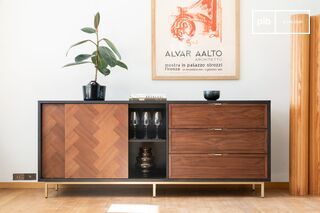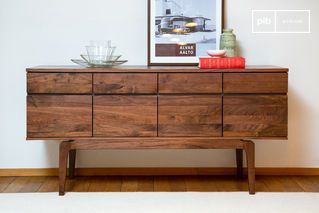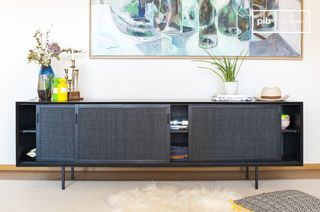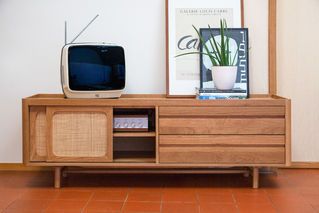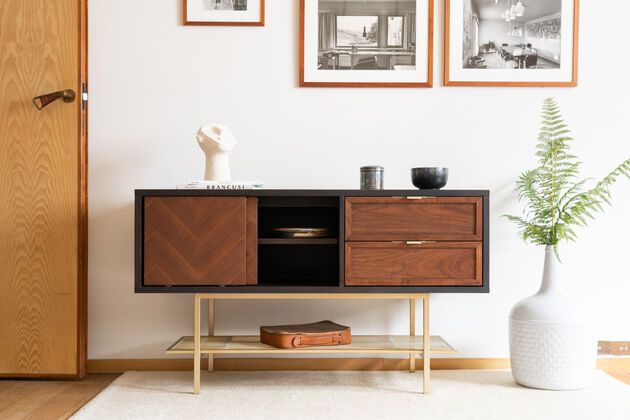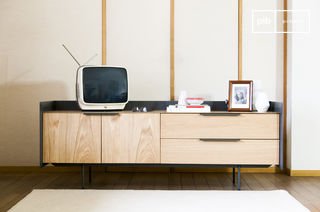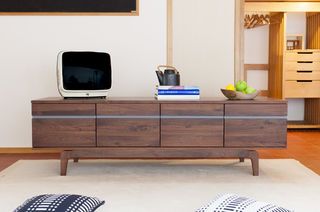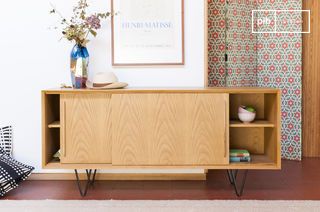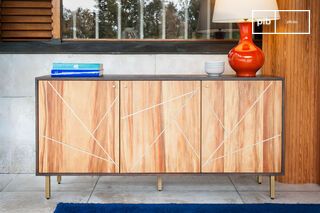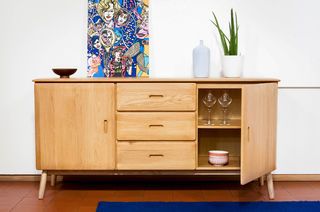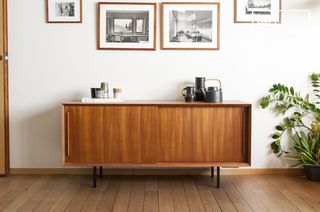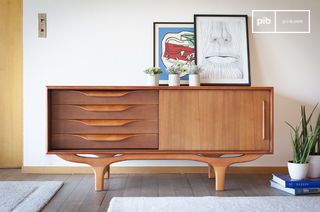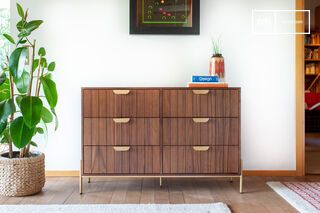Wooden sideboards
Wooden sideboards bring a clear material presence to interior design. They blend easily into interiors that favor durable, visible materials. Each species, from oak to pine, offers a distinct look, influencing the interpretation of space according to shade, grain and finish. These sideboards provide structured storage for crockery, textiles or everyday objects, while maintaining a formal continuity with the other wooden elements in the room.
read more >Filters
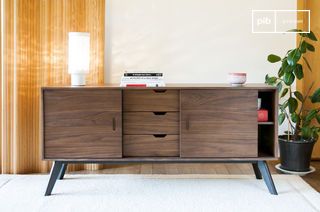
Walnut buffetHinda
€1080
10 festive days
10% off our tables and consoles
Welcome your guests in style · Limited stock
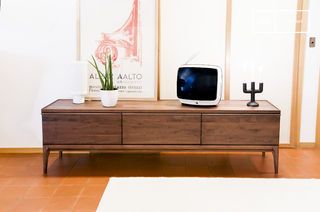
Walnut TV standHemët
€1580
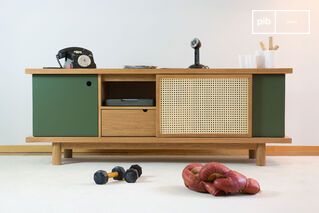
Oak buffetTammea
€980

Choosing a wooden sideboard according to species and finish
The wooden sideboard comes in several species, each defining a specific visual rendering and density. Oak, often used for its strength and neutral hue, is suitable for sober, durable spaces. Pine offers a lighter alternative, with visible veins that mark the furniture without overpowering it. Teak or walnut introduce darker hues, which can structure a room or contrast with light walls. Finishes vary: oiled, varnished or raw, they modify the perception of the surface, playing on the shine or depth of the material.
Visible, legible storage in the layout
The wooden sideboard generally occupies a width of between 100 and 180 cm. It offers internal volumes adapted to everyday needs: crockery, linen, electronic equipment or documents. This type of furniture makes its function immediately clear, without superfluous decorative effects. In a dining room, it harmonizes with the wooden table to create a coherent whole. In a living room, it can complement lighter furniture, serving as a visual base. Handles, feet or hinges can be metal, coordinated or contrasting, depending on the level of detail sought in the overall design.
Adaptability of the wooden sideboard to different contexts
The wooden sideboard can be installed in rooms of varying sizes. In a hallway or entrance hall, a compact model with exposed legs visually lightens the overall look while providing useful storage capacity. In a large living room, it can be part of a larger composition, with bookshelves, enfilade or display cabinets. Wood facilitates continuity with other surfaces: parquet flooring, door frames or objects in natural materials. It provides a stable base for the layout, without creating a break between functions and circulation.
The wooden sideboard is a clear piece of furniture, defined by its material and its use. It adapts to a wide range of furnishing contexts, providing a clear focal point without overloading or creating a decorative effect.
The wood sideboard is a readable piece of furniture, defined by its material and use

